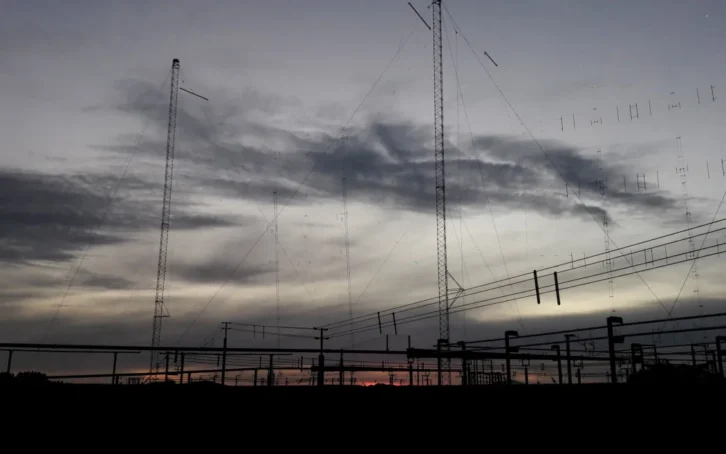The author is sales and business development manager for Ampegon Power Electronics AG.
My first car, a 1984 vintage, had a shortwave radio receiver, but I didn’t bother using it. I was young while it was old and therefore unworthy of my attention. Besides, the signal it received was mostly odd-sounding talk-radio that changed tone as I accelerated. Something to do with unscreened sparkplugs? Whatever they were. Instead, I had a huge selection of pop music available to me on the FM bands, and big plans to retrofit new dash-mounted CD player technology (which never worked)!

Nobody who ever listened to FM really prefers old analog shortwave services. Analog doesn’t have the bandwidth to provide stereo sound, and it’s subject to atmospheric distortion and (non-shielded sparkplug) interference.
Let’s be honest: People only like analog shortwave when there’s nothing else. People who live in rural areas without FM coverage; people without resources for more choice; people with authoritarian rulers, who ask what the rest of the world thinks.
I realize that a significant percentage of the world’s population are covered by these three simple classifications. But we can agree that these people deserve access to high-quality radio broadcasts, too.
Shortwave’s unique properties
The big draw of shortwave is the ability to broadcast to the other side of the world. Shortwave frequencies reflect off the ionosphere, offering long-range capabilities not possible with FM and MW propagation. With a high-power transmitter and appropriate antenna, shortwave broadcasters can provide national, continental or even inter-continental coverage from a single location.
If you need to broadcast to the whole country; if you need to provide content to remote populations; if you are providing aid to faraway regions in the midst of catastrophe, shortwave is often the only feasible way to reach everybody, right now.
Integrated broadcast networks
This is not a suggestion that broadcasters replace all FM transmitters with shortwave stations.
An “integrated network” means there are different solutions for every need, and governments should foster them. If you live in the city with dense populations, short-range FM networks are justified and economical. If you are more distant, medium-wave transmitters offer economical service at longer ranges. If you need to provide a base level service over extreme distances, shortwave provides the solution.
And of course, if localized disasters or faults take short-range services off-air, longer-range services free from the influence of these disruptions provide coverage and the reassurance of regional or national broadcasts.
Thus, a resilient three-layered network can provide multi-faceted service to its listeners: short-range broadcasts serving local demands and niche audiences, a regional level with more general programming, and a national service for an entire country.
Reinvention with DRM
Shortwave hasn’t remained unchanged from previous decades. Just like other broadcast techniques, shortwave has also been digitized.
Using the Digital Radio Mondiale standard, the only comprehensive standard for covering both the AM and FM bands, the same shortwave coverage footprint can be achieved for half the energy cost of an analog broadcast while also providing better service.
Gone are the days of atmospheric distortion and mono sound. Today, DRM shortwave provides FM-like stereo sound, and a data stream with additional internet-like text information/news in multiple languages, pictures, graphics and even short videos alongside the audio.
(In fact, in the age of analog FM, had digital shortwave features been available, the national radio I was listening to in my car would likely have been delivered by shortwave instead, such is the improvement.)
An emergency warning channel can optionally be added, which — at the press of a button — switches regular broadcasts instantly to one of any number of pre-recorded emergency messages and other relevant content; all directed to listeners at the speed of light. Every second of additional warning is critical when a tsunami or hurricane is bearing down on you. History shows that delays cost lives.
Case Study: Radio New Zealand
The fact that DRM shortwave provides FM-like quality and emergency warning features at extreme range is precisely the reason it is used by Radio New Zealand for broadcasting into the Pacific.
From their Rangitaiki station, RNZ provides daily DRM shortwave programming to the hundreds of tiny islands and atolls in the Pacific ocean. Any users with DRM radios can listen directly, but for those without a digital receiver, many of the islands and atolls have FM rebroadcasting stations. Here, the DRM signal is received and decoded, and a small FM transmitter broadcasts the stereo content as an analog signal covering the island. Effectively, DRM shortwave is providing the data link from studio to FM transmitter.

In the event of a localized emergency, these broadcasts from far over the horizon are invaluable.
On Jan. 14, 2022, the Pacific nation of Tonga was overrun by a devastating tsunami with waves up to 65 feet high, caused by an undersea volcanic eruption 15 minutes beforehand. Four people were killed, and the islands were inundated with water. Communications with the outside world was largely cut off, due to damage to undersea fiber-optic cables, as were FM transmissions.
Electrical infrastructure was disrupted and destroyed. However, Radio New Zealand was able to maintain broadcast coverage via shortwave, providing information to the people of Tonga and assisting with emergency response. It took six weeks to restore internet and telephone services to the islands. RNZ immediately ordered another transmitter to provide additional capabilities and redundancy for their DRM service, since their older standby transmitter was not DRM-capable.
Untapped potential
It is widely known that, following the closure of many traditional analog shortwave services, shortwave broadcast bands are currently underutilized.
As is the way of the universe, available resources present opportunities. There is no reason why shortwave should broadcast audible programming. It is known that stock traders are experimenting with shortwave for high-speed trading links over enormous distances. What else is currently being developed?
Nowhere is it written that receivers have to be connected to a speaker. Any data application requiring highly compressed or short messages distributed to limitless numbers of unknown or mobile receivers over enormous distances have a potential solution in shortwave. The laws of physics dictate that there are unlikely to be quicker ways to deliver messages around the world, with speed of light in air being about 50% faster than light speed in optical fiber, even before fiber repeater delays are considered.
With digital technology, global coverage and potentially limitless distribution, the available shortwave spectrum presents enormous potential.
Conclusion
In an increasingly uncertain world, with rising levels of authoritarianism and disinformation, climate change and unrest, the ability to broadcast information and news to distant lands is increasingly important to prevent suffering and exploitation worldwide.
While TV and internet provide excellent service, they are both reliant upon fixed infrastructure, and are easily censored or exploited to control “the truth.” The number of countries censoring journalism and broadcasting significantly outnumbers those with a free press. Radio broadcasting acts as a beacon of hope to those fighting against tyranny offering support to those suffering — especially long-range shortwave broadcasts made from places of stability and safety, unaffected by borders or the need for local infrastructure.
Digital DRM offers the only common standard across all radio bands and levels the playing field in terms of broadcast quality: No longer is a shortwave signal destined to be distorted and fading. And, still, it is long-range shortwave services that are the service of last resort in the event of emergencies or disasters. Indeed, shortwave continues to prove itself indispensable in an uncertain world, remaining the most resilient backstop of integrated broadcasting systems.
Often neglected as old tech, shortwave’s powerful new capabilities remain relevant and largely unexplored.
[Read more articles and commentaries about shortwave radio and its role in the world.]










